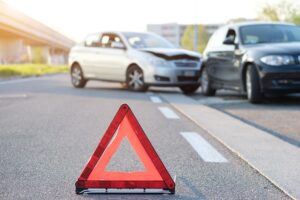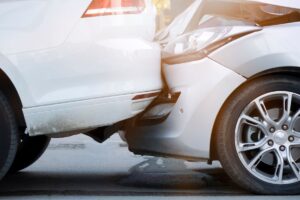Traffic rules are intended to ensure safety on the roads. However, these traffic regulations differ from country to country in Europe. So if you extend your journeys beyond Germany’s borders, you should be aware of the rules and peculiarities of Europe’s roads. In this article, we look at country-specific traffic regulations in the surrounding European countries that are relevant for drivers.
Contents
Generally applicable traffic rules in Europe
In general, a speed limit applies on highways in all European countries. This is usually between 100 km/h and 140 km/h. Information boards on entering the country provide information about the speed limits that apply there. In addition, many highways are subject to tolls and in most countries you have to drive with dipped headlights even during the day.
However, there is no generally applicable catalog of fines in Europe. Each country therefore imposes different fines for violations of traffic regulations.
Austria
By and large, the Austrian traffic regulations correspond to the regulations in most European countries. However, it should be noted that driving with dipped headlights switched on is mandatory both during the day and at night. In addition, the highway and expressway network in Austria – with a few exceptions – is subject to tolls. In addition, drivers must always have a high-visibility vest to hand while driving in case they have to leave the vehicle.
The vignette, also known as a “sticker”, is available in three different versions: for ten days, for two months and for one year. Without a valid vignette, you risk a fine. The vignette can be purchased either in an ASFINAG toll store or via the free ASFINAG app.
Switzerland
Due to the many mountain roads in Switzerland, there is a special right-of-way rule that must be observed: The vehicle driving uphill always has right of way. So if you are driving down a mountain road, you have to let the oncoming car pass. In Switzerland, it is also mandatory to drive with daytime running lights at all times of the day and night.
Netherlands
Since 2020, the speed limit on Dutch freeways has been 100 km/h between 6 am and 7 pm. At night, 120 and 130 km/h are permitted. Driving on the freeways is generally free of charge, with the exception of a few tunnels, which are subject to a charge. Yellow solid lines on the streets indicate a parking ban. Blue markings indicate parking zones in which parking is permitted with a parking disk.
Small white triangles on the road – also known as shark’s teeth – regulate the right of way. The driver with the shark’s teeth on his lane must give way to other road users.
In contrast to Germany, a high-visibility vest is not compulsory in the car, but it is recommended. Furthermore, winter tires are not compulsory in the Netherlands.

France
The French traffic regulations are also very similar to the German regulations and those in Europe. But similarities to the Netherlands are also easy to spot: in France, parking bans are marked with yellow dashed lines, while solid yellow lines indicate a stopping ban. Blue markings on the roadside indicate parking spaces where parking is free with a parking disk.
The general speed limit on highways is 130 km/h, in wet conditions the speed limit is 110 km/h. France has strict regulations on speed enforcement and the use of radar detectors is considered a traffic offense. A fine of up to EUR 1,500 may be imposed if the French police find a radar detector in the vehicle. In addition, it has been compulsory to carry a high-visibility vest in France since 2008.
Denmark
In Denmark, dipped headlights must also be switched on during the day. Shark teeth regulate the right of way on Danish roads, as they do in the Netherlands. There is no acceleration lane on the highway ramps. For this reason, the zipper principle applies and drivers must always be let in.
The Danes are no joke when it comes to speeding. A fine of EUR 135 is due for as little as 1 km/h too much in a 50 km/h zone.
It is also advisable to carry a parking disk, as the parking time in public parking lots is usually limited. Unlike in Germany, where the parking disk is set to the half-hour mark, in Denmark the parking disk must be set to the next quarter of an hour. Non-compliance may result in a fine of up to EUR 70.
Poland
Even if the traffic regulations in Poland are very similar to those in Germany, there are still a few special features to bear in mind. In Poland, too, it is a legal requirement to drive with dipped headlights at all times of the day and night. Daytime running lights are also sufficient for newer vehicles.
A speed limit of 140 km/h applies on the highways and 90 km/h is permitted on country roads. The main traffic arteries in the country, including selected sections of the A1, A2 and A4 highways, are subject to tolls for all vehicles. In addition, winter tires are mandatory in Poland between November 1 and April 1. Drivers in Poland must also carry a high-visibility vest for each occupant of the vehicle.
The blood alcohol limit is 0.2. Over 0.5 per mille is a criminal offense that carries a fine or even a prison sentence of up to two years and a driving ban of three years.
Czech Republic
As in other European countries, specific traffic regulations also apply in the Czech Republic. As soon as drivers are on Czech roads, the lights on the vehicle must be switched on – regardless of the time of day or night. The speed limit on Czech freeways is 130 km/h, the maximum speed limit on expressways is 110 km/h and 90 km/h outside built-up areas. From November 1 to March 31, winter tires are mandatory on certain roads for vehicles up to 3.5 t in winter road conditions. And in the Czech Republic, too, a safety vest must be worn by every passenger.
Drinking and driving is an absolute taboo in the Czech Republic, as there is a blood alcohol limit of 0.0. Violators face a fine of up to EUR 800 and a driving ban of up to one year. This makes the Czech Republic and Hungary the two countries in Europe with the strictest blood alcohol limits.
The most important traffic rules in Europe
When driving in our neighboring European countries, it is important to observe the country-specific regulations in order to be safe on the roads. You should therefore find out about local legislation in advance.
In France, for example, radar detectors are banned and in the Czech Republic there is a 0.0 blood alcohol limit.
All other countries in Europe have a common speed limit on the highways, which is usually between 100 and 140 km/h.
Further Fleet Knowledge
If you liked this article and would like to know more about this topic, we recommend these articles.

Fuel cards for companies: Advantages, functions and tips for use



